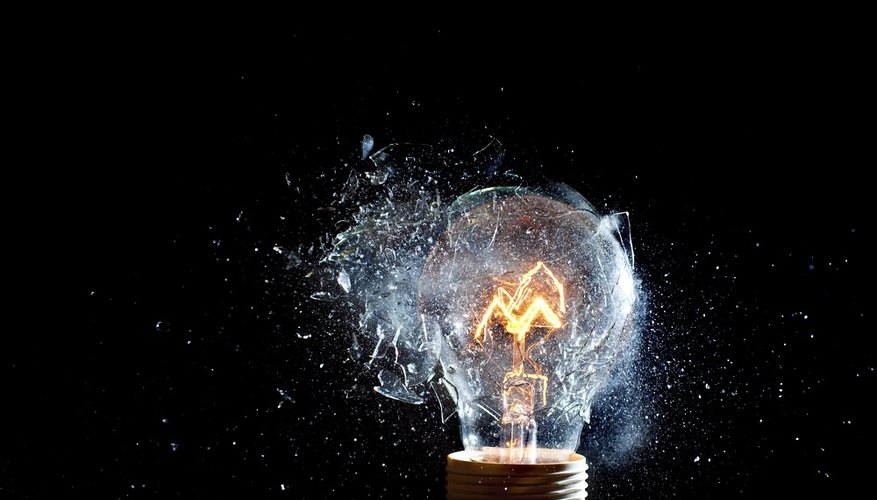A light bulb is one of the most common household items. A glass bubble with a filament inside of it, a light bulb accepts an electric current that runs through the filament, causing the metal to heat up and glow brightly. Light bulbs are made of glass, and they often have a coating on the inside of the glass to modify the glow from the filament. The inside of a light bulb is also supposed to be vacuum sealed tightly so that no gases get into it. Even when properly assembled and used, though, light bulbs will occasionally explode. This can happen for a variety of reasons, and sometimes from a combination of these reasons.
Construction causes
Small damages to the make-up of a light bulb can eventually lead to an explosion. If a glass wasn't sealed properly, then air from outside the bulb will rush inside. The enhanced amount of oxygen and the changes in pressure between the inside and outside of the bulb will result in the filament burning out sooner and the glass exploding. Additionally, the longer a light bulb is used, the more worn the filament becomes. Usually the filament just burns out, but sometimes it shoots out through the glass, causing the light bulb to explode from the force of its ejection.
- Small damages to the make-up of a light bulb can eventually lead to an explosion.
- Usually the filament just burns out, but sometimes it shoots out through the glass, causing the light bulb to explode from the force of its ejection.
External causes
Even a light bulb that is made properly and that maintains its integrity may still explode due to outside causes. When a light bulb is switched on, for instance, it can become very hot. If the bulb comes into contact with cold water, even a few drops on one section, the temperature change can cause the glass to contract and then shatter.
Environment causes
Power surges, particularly lightning, may be responsible for a number of cases of exploding light bulbs. If too much power floods through the filament it can burst, leading to the light bulb exploding from the inside out. Faulty wiring, which may result in power surges and fluctuating electricity, can also have a similar effect on light bulbs.
